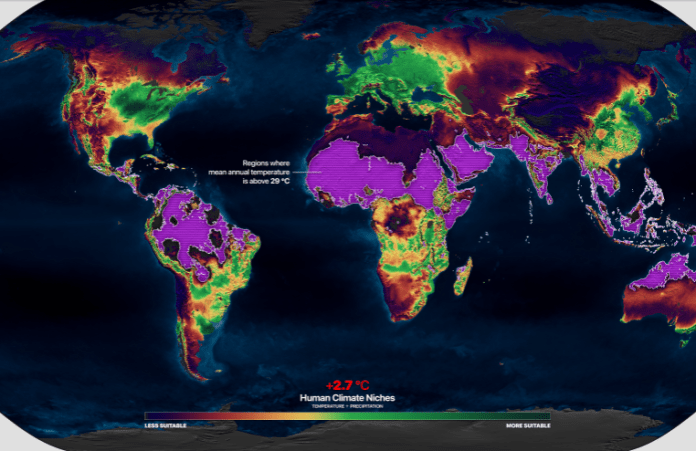Countries across the Gulf region and the wider Middle East are highly vulnerable to extreme heat borne out of climate change, with poorer populations being particularly at risk in the decades ahead, a new study has warned.
The research, published in the Nature Sustainability journal and released on Monday, looks at how countries are exposed to “unprecedented heat” that it describes as mean annual temperatures of 29 degrees Celsius (84.2 degrees Fahrenheit) or higher.
It evaluates the exposure in two scenarios by 2070, namely if global temperatures rise by 1.5C (2.7F) or by 2.7C (4.9F).
In a scenario where the global population is 9.5 billion people and global temperatures rise by 2.7C (4.9F) by that time, Qatar would have the entirety of its population exposed to extreme heat, closely followed by the United Arab Emirates (UAE) and Bahrain with almost their whole populations exposed, the study found.
Kuwait and Oman would have more than 80 percent of their populations exposed, followed by Saudi Arabia with more than 60 percent and Yemen with about half.
Saudi Arabia and the UAE may be facing a dire situation in either temperature rise scenario as a majority of their populations are also projected to be exposed to extreme heat even if global temperatures rise by 1.5C (2.7F).
Last week, the World Meteorological Organization said the next five years will be the warmest period ever recorded as for the first time, global temperatures were now more likely than not to exceed 1.5C (2.7F) of warming until 2027.
Source: Aljazeera

















